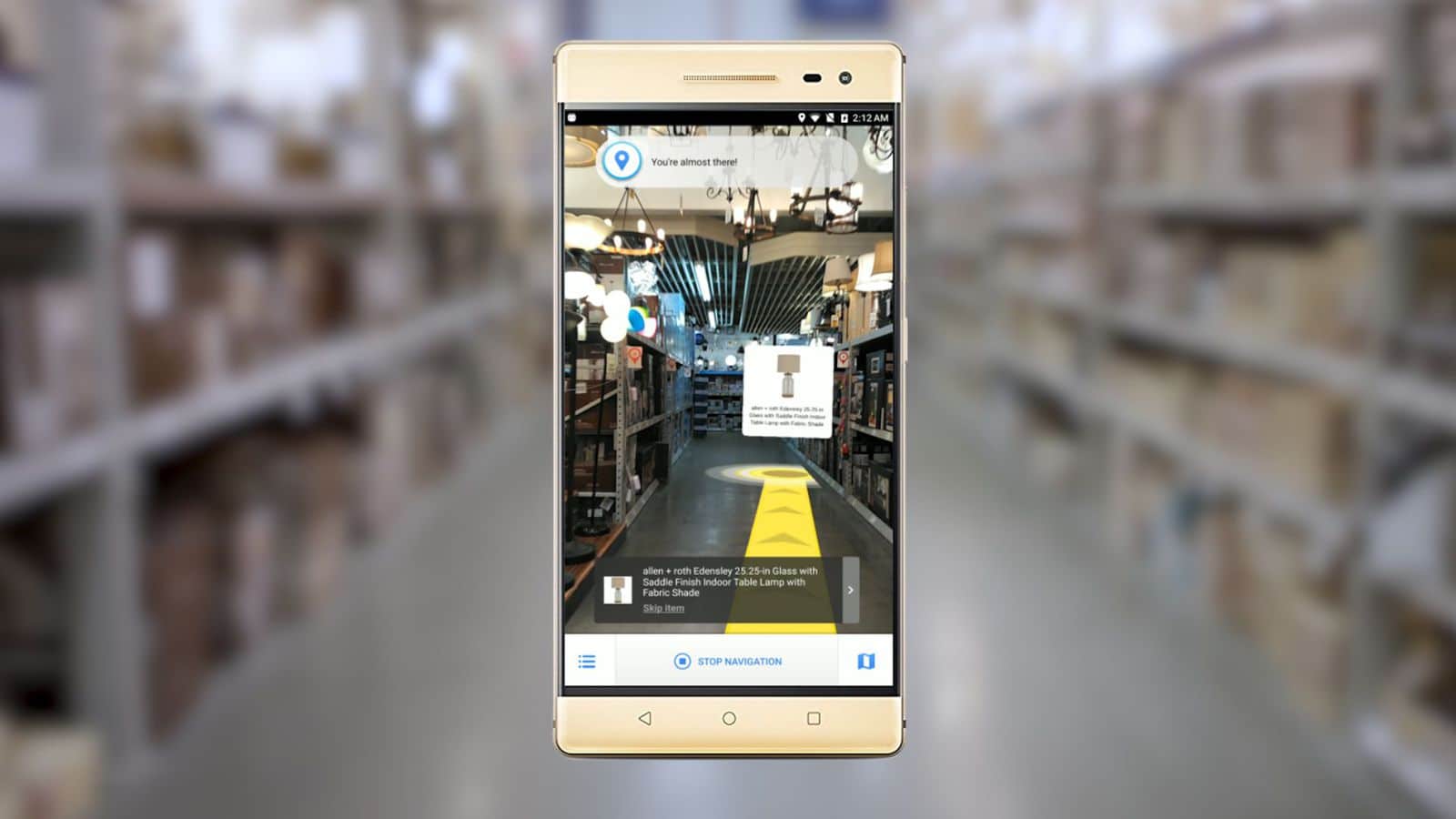
Among the speculative revenue models for consumer AR apps, advertising could hold lots of opportunity. But we remain cautiously optimistic — the caution coming from our former-life analyst coverage in the mobile advertising sector.
Before getting into the challenges, what are the bright spots? First, AR’s use case correlates to location relevance and high engagement levels — two factors that create fertile ground for advertising. And AR’s potential handoff to actionable local commerce is promising.
For example, object recognition and the AR cloud will enable information retrieval in the physical world. And based on commercial intent when people are out of home, many AR use cases could drive local commerce, such as pointing your phone at a storefront to overlay business details.
This is precisely what Google is hoping for Lens. Given that Google’s core business has been challenged in the smartphone era in terms of search volume and declining CPCs, it wants to boost activity with additional forms of search: voice and visual. The latter could involve AR-delivered ads.
This extends Google’s mission statement to “organize the world’s info and make it accessible”… but does so in a more visual context. So there will be lots of ways for Google and others to engage consumers in similar ways through AR, including various flavors of ads or sponsored content.

Not So Fast
When it comes to AR’s ad scenerios, there are lots of potential strengths including high user engagement — a key advertising metric. But though that could be effective on an individual-impression basis, AR advertising could be challenged to scale in the aggregate.
In other words, AR in the next 18-24 months will continue to have a relatively niche status in media and advertising terms. This diminishes reach, which is a primary objective of most brand advertisers and ad agencies. There’s simply not enough scale yet in AR to get them excited.
“Advertising is something we’ve thought of,” Snaappy CEO Gal Shvebish told ARtillry recently. “At the moment, it won’t be interesting enough for brands because there isn’t enough muscle; there isn’t enough user base and critical mass. How many people will see their ads?”
Quantifying that a bit, there are about 2000 ARkit apps within a universe of about 2.2 million iOS apps. And as we know, downloads are a vanity metric: it’s all about active use. There, AR could be further challenged by short sessions. It’s a snack, not a meal which could lessen ad inventory.
Meanwhile, a metric referenced by AR ad proponents is the large installed base of AR-compatible phones — 500 million according to our calculations. That’s certainly a strong proxy for market size and opportunity, but the relevant figure for advertising is much more granular (active use).
In other words, ad networks, media companies and publishers don’t sell ads based on hardware penetration (e.g. how many people own TVs). Ad sales happen based on specific and validated network or publisher reach (e.g. how many people watch CBS on Tuesday night).

Mom & Pop
Most of the above goes for large brand advertiser and agency sentiments. So a question that remains is, what about small businesses (SMBs)? They don’t require the same reach, and are more attuned to targeting a geographically-finite radius for a given service area.
That makes AR’s near-term volume detriments less of an issue for mom & pops. However SMB advertising faces bigger challenges: fragmentation and education. In ad-sales terms, cost of acquisition and churn rates are high while margins are low, given SMB ad spend levels.
SMBs are also time-starved and wear many hats including their core business operation plus CMO. They’re flooded with local ad sales calls, and are generally late to adopt new technology if the smartphone era is any indication (we’ve spent years studying SMB ad buying behavior).
Ultimately, AR could be effective for SMBs, given its potential for local discovery (customer acquisition), and in in-store engagement like AR-guided menus (customer retention). But near-term adoption will be limited to certain verticals, like restaurants, and extra-savvy SMBs.

New Behavior, New Metrics
Whether it’s brands or SMBs, AR will bring opportunities for customer acquisition. And some will stand out for great execution. But in terms of aggregate spend — as we’re always thinking in market-sizing terms — advertising won’t be a sizable revenue source in AR for a while.
Meanwhile, even though AR doesn’t have the scale to excite brand advertisers as a distribution channel, it will be valuable in data collection. In other words, like we discussed with Thrillbox, collecting user behavior in AR (and VR) can inform ad targeting/re-targeting in other media.
Another thing to watch are the metrics themselves. Just like AR app design will evolve in native ways, user analytics will have to evolve with it. That will carry over to advertising in terms of native metrics for measuring effectiveness. We’ve witnessed the same evolution with mobile ads.
And like mobile, we’ll see comical misfires like applying click-through-rates to AR ads. They’ll only really be successful when metrics truly align with user intent and behavior. Whether that’s gaze-based or action-oriented (think: tracking store visits), there will be lots of transformation to watch.
For a deeper dive on AR & VR insights, see ARtillry’s new intelligence subscription, and sign up for the free ARtillry Weekly newsletter.
Disclosure: ARtillry has no financial stake in the companies mentioned in this post, nor received payment for its production. Disclosure and ethics policy can be seen here.
